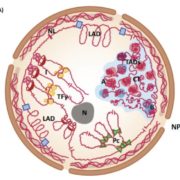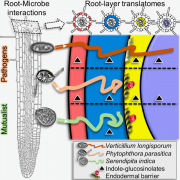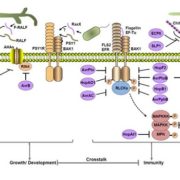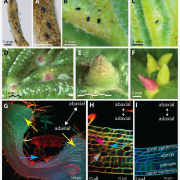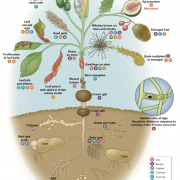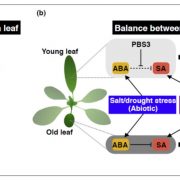A NIN-LIKE PROTEIN mediates nitrate-induced control of root nodule symbiosis in Lotus japonicus
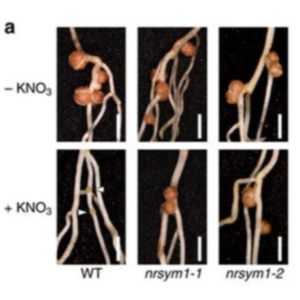 Legumes form root endosymbioses with Rhizobium bacteria in a special structure called nodule. In this symbiotic relationship, on one hand the plant provides the microbe with sugars and in exchange it receives fixed atmospheric nitrogen, the main limiting element for plant growth. Nevertheless, when nitrogen is abundant, at the concentration of 10-50 mM, the plant does not establish symbiosis anymore. In their work, Nishida et al. described and characterized a new transcription factor from Lotus japonicus called NITRATE UNRESPONSIVE SYMBIOSIS 1 (NRSYM1) that guaranteed to the plant to monitor nitrogen levels and regulate nodule formation. NRSYM1 is activated by nitrate and directly intermediates the production of CLE-RS2, a mobile peptide produced in the root that negatively regulate nodule number. Therefore, NRSYM1 knock-out plants form nodules even at higher concentration of nitrogen. (Summary by Marco Giovannetti) Nature Comms. 10.1038/s41467-018-02831-x
Legumes form root endosymbioses with Rhizobium bacteria in a special structure called nodule. In this symbiotic relationship, on one hand the plant provides the microbe with sugars and in exchange it receives fixed atmospheric nitrogen, the main limiting element for plant growth. Nevertheless, when nitrogen is abundant, at the concentration of 10-50 mM, the plant does not establish symbiosis anymore. In their work, Nishida et al. described and characterized a new transcription factor from Lotus japonicus called NITRATE UNRESPONSIVE SYMBIOSIS 1 (NRSYM1) that guaranteed to the plant to monitor nitrogen levels and regulate nodule formation. NRSYM1 is activated by nitrate and directly intermediates the production of CLE-RS2, a mobile peptide produced in the root that negatively regulate nodule number. Therefore, NRSYM1 knock-out plants form nodules even at higher concentration of nitrogen. (Summary by Marco Giovannetti) Nature Comms. 10.1038/s41467-018-02831-x


